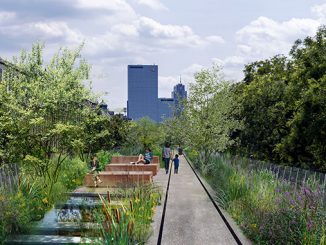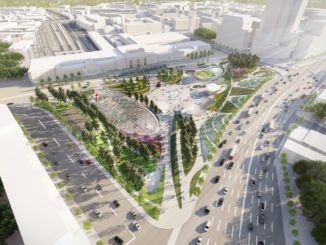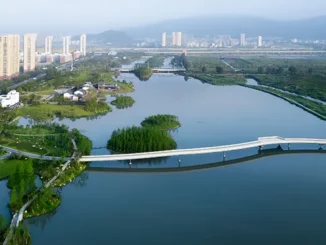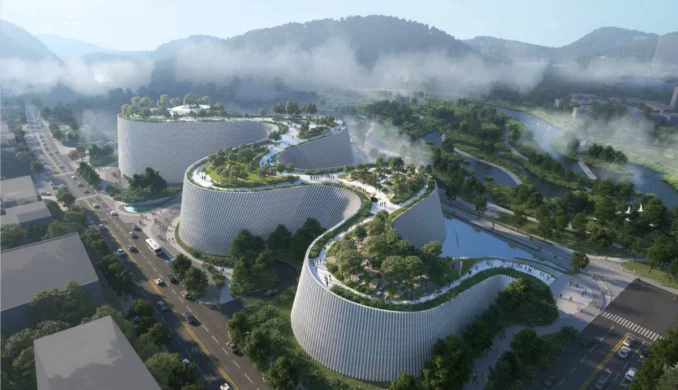
Set to be one of Shenzhen’s “Ten Cultural Facilities in the New Era” and the first large-scale natural history museum in Southern China, the new 100,000 sqm Shenzhen Natural History Museum will become a world-class destination once completed. Inspired by the ecologically rich Yanzi Lake Area, the Shenzhen Natural History Museum creates an iconic regional destination through strategic connections to existing and restored ecological systems and helps to redefine the traditional museum experience.
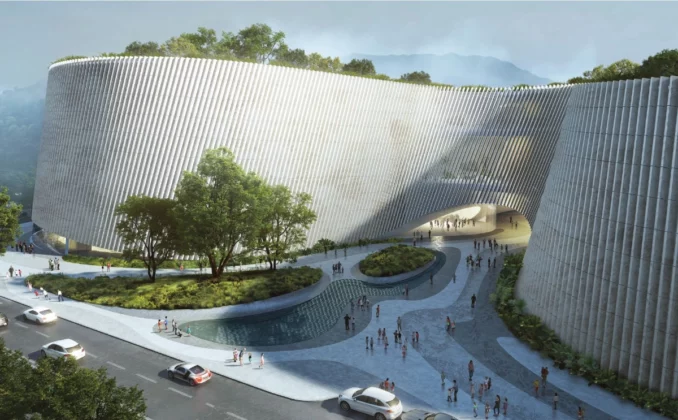
DELTA CONCEPT: The area is renowned for its picturesque undulating mountains set amongst braided rivers. This water, which has shaped the environment over millennia, contains profound meanings in local culture. Inspired by this, the “Delta” concept creates an overlap between Yanzi Hill and Yanzi Lake to form a robust new River Delta that reflects the dynamism and richness of the surrounding ecosystem.
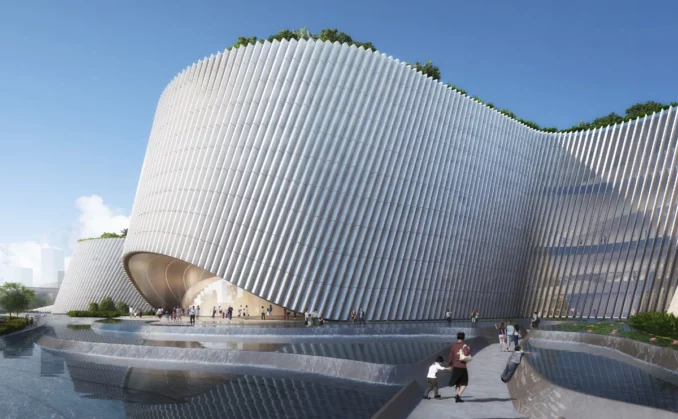
EBB AND FLOW: Like the ebb and flow of the Pingshan River, the lines between man-
made and natural ecosystems are intentionally blurred and intertwined within the landscape. It is hard to define where the building ends and the landscape begins. This approach underpins a powerful belief that building, and landscape must work in harmony to create a setting that reflects the beauty and ecological richness of the Yanzi Lake area.
A TEACHING LANDSCAPE: In response to the context and the needs of the end-users, the landscape functions at three levels which co-exist and shape each other. First, it is a system-based landscape informed by the Yanzi Lake ecosystem and intended as a connective element linking the city and natural world. Secondly, it is designed at a human scale, distilling complex ecological processes into experiences that can be touched and seen by children and families. Finally, the landscape is dynamic by nature – a living element that shifts and reveals as it guides visitors through the space.
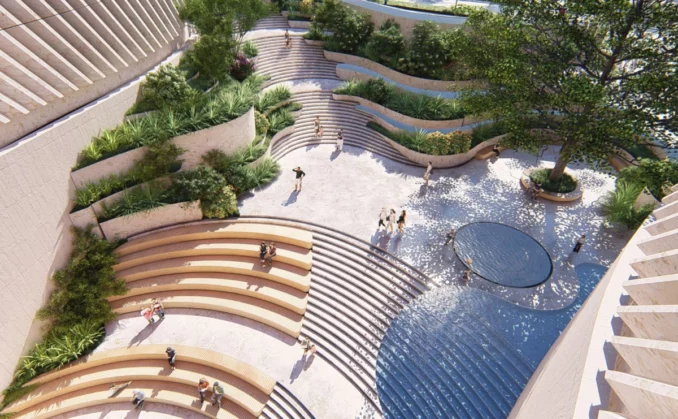
BRINGING LEARNING OUTSIDE: The integration of interior and exterior spaces was developed as a strategy for creating a more inclusive and healthier environment but also to connect visitors with living natural spaces and further enhance the ability of the Museum to showcase and create dynamic educational environments.
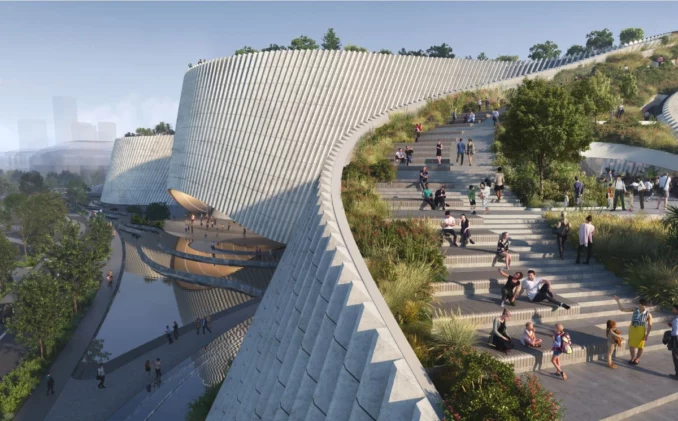
A BOLD NEW ROOFTOP DELTA PARK: The rooftop park is intended to be accessible by all. The design creates a natural journey through the subtle incline and decline that visitors experience when walking across its length. This journey, from a low to a high point, reflects the arc of civilization and allows the landscape to create a series of thematic zones which bring to life the evolutionary timeline of planet earth.
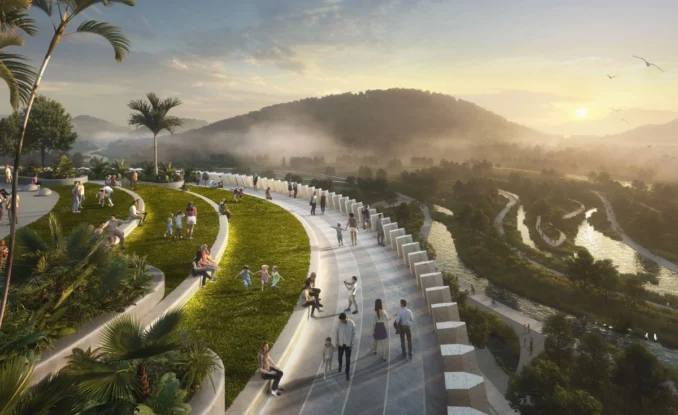
A JOURNEY THROUGH TIME: Beginning at either the Plants World zone or at the future-facing Cosmic Garden, visitors move through a series of thematic zones that each showcase a unique stage of life upon earth. The timeline narrative, along with strong connections to the Museum interior, ensures the landscape goes beyond a traditional park and becomes a unique learning environment that creates powerful outdoor teaching spaces that playfully reveal the wonders of life on earth.
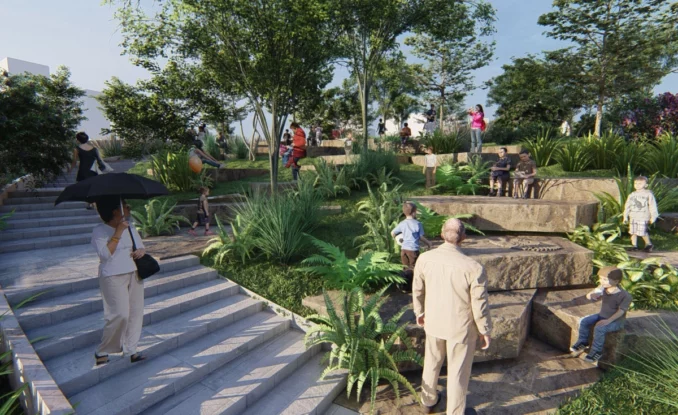
TOWARD A SUSTAINABLE & RESILIENT FUTURE: The Museum’s landscape reveals the natural history and ecological heritage of the region but also prompts visitors to think about their role within the natural world and how they might contribute to a more balanced and resilient future for all who call Earth home. In this way, the landscape design transcends the building and the immediate site to encompass the surrounding natural ecosystem, the city and the globe.
Shenzhen Natural History Museum
Designer Credit: B+H. Barry Day, Wing Cen, Zikai Zhuang, Sze Wynne Ng, Jireh Dagdag
Client: Bureau of Public Works of Shenzhen Municipality
Company Role on Project: Design Landscape Architect (Lead Landscape Architect)
Collaborators/Other Consultants: 3XN, Zhubo

